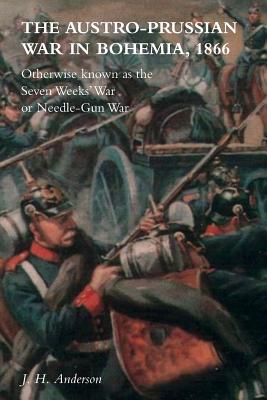The Austro-Prussian War in Bohemia, 1866: Otherwise Known as The Seven Weeks' War or Needle-Gun War

The Austro-Prussian War in Bohemia, 1866: Otherwise Known as The Seven Weeks' War or Needle-Gun War
The Austro-Prussian War, or Seven Weeks' War, was fought in 1866 between the German Confederation under the leadership of the Austrian Empire and its German allies on one side and the Kingdom of Prussia with its German allies on the other, that resulted in Prussian dominance over the German states. Prussia had also allied with the Kingdom of Italy, linking this conflict to the Third Independence War of Italian unification.
The main campaign of the war occurred in Bohemia. Prussian Chief of General Staff Helmuth von Moltke had planned meticulously for the war. He rapidly mobilised the Prussian army and advanced across the border into Saxony and Bohemia, where the Austrian army was concentrating for an invasion of Silesia. There, the Prussian armies, led nominally by King William I, converged, and the two sides met at the Battle of Königgrätz (Hradec Králové) on 3 July. The Prussian Elbe Army advanced on the Austrian left wing, and the First Army on the centre, prematurely; they risked being counter-flanked on their own left. Victory therefore depended on the timely arrival of the Second Army on the left wing. This was achieved through the brilliant work of its Chief of Staff, Leonhard Graf von Blumenthal.
Useful and reliable primer that was designed for use of Staff College students sitting exams in 1908, and as such gives a clear analytical account of this mid-19th century conflict. The Seven Weeks' War was the first war between two major continental powers in seven years, and used many of the same technologies as the American Civil War. The Prussian Army used von Dreyse's breech-loading needle gun, which could be rapidly loaded while the soldier was seeking cover on the ground, whereas the Austrian muzzleloading rifles could only be loaded slowly, and generally from a standing position. Superior Prussian organisation and élan decided the battle against Austrian numerical superiority, the victory was near total, with Austrian battle deaths nearly seven times the Prussian figure.
PRP: 132.27 Lei
Acesta este Prețul Recomandat de Producător. Prețul de vânzare al produsului este afișat mai jos.
119.04Lei
119.04Lei
132.27 LeiIndisponibil
Descrierea produsului
The Austro-Prussian War, or Seven Weeks' War, was fought in 1866 between the German Confederation under the leadership of the Austrian Empire and its German allies on one side and the Kingdom of Prussia with its German allies on the other, that resulted in Prussian dominance over the German states. Prussia had also allied with the Kingdom of Italy, linking this conflict to the Third Independence War of Italian unification.
The main campaign of the war occurred in Bohemia. Prussian Chief of General Staff Helmuth von Moltke had planned meticulously for the war. He rapidly mobilised the Prussian army and advanced across the border into Saxony and Bohemia, where the Austrian army was concentrating for an invasion of Silesia. There, the Prussian armies, led nominally by King William I, converged, and the two sides met at the Battle of Königgrätz (Hradec Králové) on 3 July. The Prussian Elbe Army advanced on the Austrian left wing, and the First Army on the centre, prematurely; they risked being counter-flanked on their own left. Victory therefore depended on the timely arrival of the Second Army on the left wing. This was achieved through the brilliant work of its Chief of Staff, Leonhard Graf von Blumenthal.
Useful and reliable primer that was designed for use of Staff College students sitting exams in 1908, and as such gives a clear analytical account of this mid-19th century conflict. The Seven Weeks' War was the first war between two major continental powers in seven years, and used many of the same technologies as the American Civil War. The Prussian Army used von Dreyse's breech-loading needle gun, which could be rapidly loaded while the soldier was seeking cover on the ground, whereas the Austrian muzzleloading rifles could only be loaded slowly, and generally from a standing position. Superior Prussian organisation and élan decided the battle against Austrian numerical superiority, the victory was near total, with Austrian battle deaths nearly seven times the Prussian figure.
Detaliile produsului










